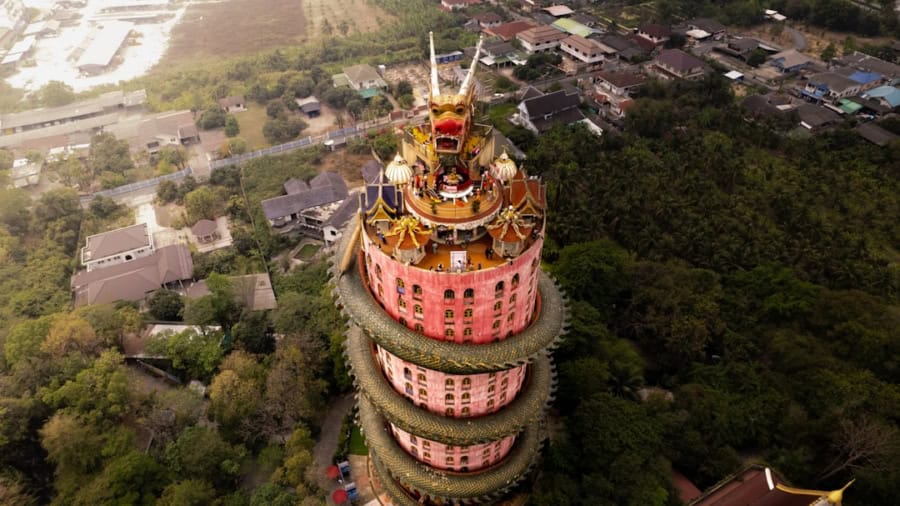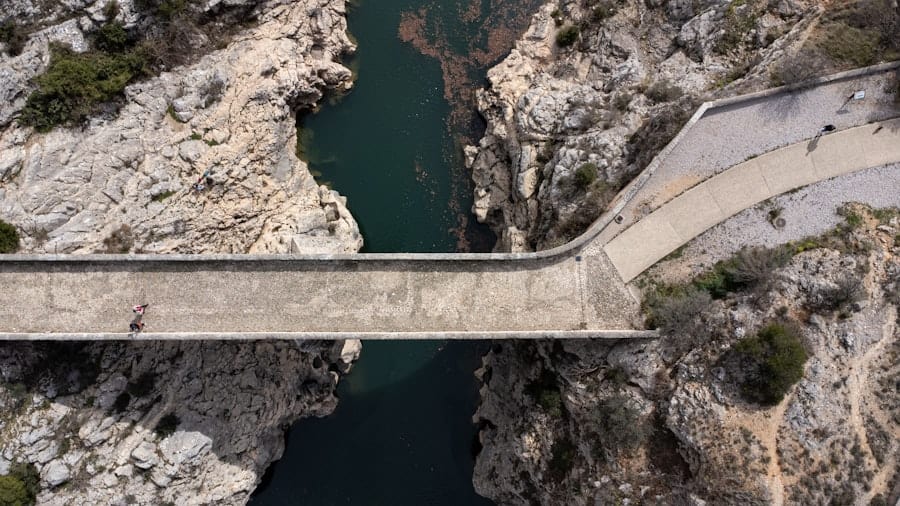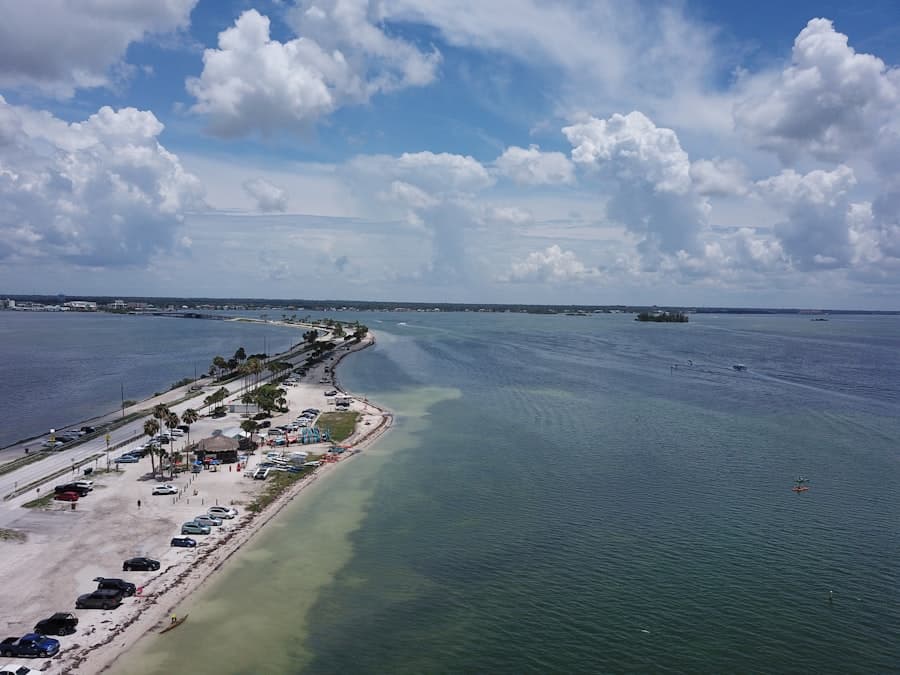The advent of drone technology has revolutionized various industries, and cinematography is no exception. Drones, or unmanned aerial vehicles (UAVs), have emerged as powerful tools for filmmakers, enabling them to capture breathtaking aerial shots that were once the domain of expensive helicopters or fixed-wing aircraft. The integration of drones into cinematography has democratized access to high-quality aerial footage, allowing independent filmmakers and large production houses alike to explore new creative horizons.
With the ability to fly at various altitudes and angles, drones provide a unique perspective that enhances storytelling and visual appeal. The evolution of drone technology has been rapid, with advancements in camera stabilization, battery life, and flight control systems. Modern drones are equipped with high-definition cameras capable of shooting in 4K and even 8K resolution, offering filmmakers unprecedented clarity and detail.
This technological leap has not only improved the quality of aerial shots but has also made it easier for cinematographers to achieve complex movements and compositions that were previously challenging to execute. As a result, drones have become an essential tool in the filmmaker’s arsenal, transforming the way stories are told on screen.
Key Takeaways
- Drones have revolutionized the field of cinematography, offering new perspectives and creative possibilities for filmmakers.
- The use of drones in cinematography provides advantages such as cost-effectiveness, flexibility, and the ability to capture unique aerial shots.
- Drones enable filmmakers to employ creative cinematography techniques such as aerial tracking shots, dynamic perspectives, and seamless transitions.
- Safety and legal considerations are crucial when using drones for cinematography, including obtaining proper permits and adhering to aviation regulations.
- Case studies of successful drone cinematography showcase the stunning visuals and storytelling potential that drones bring to film and television productions.
Advantages of Using Drones for Cinematography
Unparalleled Access to Breathtaking Landscapes
With drones, capturing sweeping shots of mountainous landscapes or coastal cliffs is effortless, providing a sense of scale and grandeur that enhances the visual narrative. This ability to access previously inaccessible locations has opened up new creative possibilities for filmmakers.
Cost-Effective and Logistically Efficient
Hiring a helicopter for aerial shots can be exorbitantly expensive, not to mention the logistical challenges involved in coordinating such operations. Drones offer a more budget-friendly alternative without compromising on quality, making it possible for independent filmmakers and smaller production companies to incorporate stunning aerial footage into their projects.
Leveling the Playing Field in Cinematography
The affordability of drones has led to a surge in creative projects that might not have been feasible otherwise. With the ability to achieve cinematic quality at a fraction of the cost, drones have democratized access to high-quality aerial footage, leveling the playing field in an industry that often favors those with larger budgets.
Creative Cinematography Techniques Enabled by Drones
Drones have unlocked a plethora of creative techniques that were previously difficult to achieve with traditional filming methods. One such technique is the “dolly zoom,” also known as the “Vertigo effect,” which creates a disorienting visual experience by simultaneously zooming in on a subject while moving the camera away. With drones, filmmakers can execute this effect smoothly from the air, adding a dynamic element to their storytelling.
This technique can be particularly effective in conveying emotional tension or highlighting a character’s isolation within a vast landscape. Another innovative technique made possible by drones is the “follow shot,” where the drone tracks a moving subject from above. This method allows for fluid transitions between different scenes or actions, creating a seamless narrative flow.
For example, in action sequences or chase scenes, drones can follow characters as they navigate through various terrains, providing viewers with an immersive experience that draws them into the action. The ability to capture these dynamic movements enhances the overall production value and keeps audiences engaged.
Safety and Legal Considerations for Using Drones in Cinematography
While the benefits of using drones in cinematography are substantial, filmmakers must also navigate a complex landscape of safety and legal considerations. The Federal Aviation Administration (FAA) in the United States has established regulations governing drone operations, particularly for commercial use. Filmmakers must obtain the necessary licenses and permits to operate drones legally, which includes registering the drone and adhering to specific flight restrictions.
These regulations are designed to ensure public safety and minimize risks associated with drone flights. Safety is paramount when operating drones on film sets. Filmmakers must conduct thorough risk assessments before each flight, considering factors such as weather conditions, proximity to people and structures, and potential hazards in the environment.
Implementing safety protocols, such as maintaining a safe distance from crowds and ensuring that all crew members are aware of drone operations, is essential to prevent accidents. Additionally, filmmakers should invest in training for drone operators to ensure they possess the skills necessary to navigate complex filming scenarios safely.
Case Studies of Successful Drone Cinematography
Several notable films and television shows have successfully integrated drone cinematography into their visual storytelling, showcasing the technology’s potential. One prominent example is the acclaimed HBO series “Game of Thrones,” which utilized drones extensively to capture sweeping shots of its stunning landscapes. The show’s cinematographers employed drones to film expansive views of castles, mountains, and battle scenes, enhancing the epic scale of the narrative.
The aerial footage contributed significantly to the show’s visual identity, making it one of the most visually striking series in television history. Another compelling case study is the documentary “Planet Earth II,” produced by the BBThis groundbreaking series employed drones to capture breathtaking footage of wildlife in their natural habitats. The use of drones allowed filmmakers to document animal behavior from unique angles without disturbing the creatures or their environments.
For instance, drones were used to film iguanas fleeing from predators on a remote island, providing viewers with an intimate glimpse into nature’s drama. The success of “Planet Earth II” demonstrated how drones could elevate documentary filmmaking by offering new perspectives on familiar subjects.
Training and Skills Required for Using Drones in Cinematography
Operating drones for cinematography requires a specific set of skills and training to ensure both effective filming and safety compliance. Aspiring drone operators must first familiarize themselves with the technical aspects of drone flight, including understanding how to control altitude, speed, and direction. Proficiency in piloting is crucial; operators must be able to maneuver drones smoothly while capturing footage without jarring movements that could detract from the cinematic quality.
In addition to piloting skills, knowledge of camera operation is essential for effective drone cinematography. Operators should understand how to adjust settings such as exposure, focus, and frame rate while in flight. This dual expertise allows them to capture high-quality footage that meets professional standards.
Future Trends and Innovations in Drone Cinematography
The future of drone cinematography is poised for exciting developments as technology continues to advance at a rapid pace. One emerging trend is the integration of artificial intelligence (AI) into drone systems. AI-powered drones can analyze their surroundings in real-time, enabling them to autonomously navigate complex environments while avoiding obstacles.
This capability could significantly enhance safety during filming and allow for more creative freedom as operators focus on capturing stunning visuals rather than managing flight paths. Another promising innovation is the development of larger drones capable of carrying heavier camera equipment. As filmmakers increasingly seek higher-quality footage with advanced camera systems, larger drones will provide greater versatility in terms of equipment options.
This evolution could lead to new possibilities for cinematic storytelling, allowing filmmakers to experiment with different lenses and camera setups that were previously impractical for aerial shots.
The Impact of Drones on the Cinematography Industry
The impact of drones on the cinematography industry has been profound and transformative. By providing filmmakers with unprecedented access to aerial perspectives and creative techniques, drones have redefined visual storytelling across various genres. The cost-effectiveness and versatility of drone technology have democratized filmmaking, enabling independent creators to produce high-quality content that rivals larger productions.
As technology continues to evolve, it is likely that drones will play an even more significant role in shaping the future of cinematography. With advancements in AI integration and equipment capabilities on the horizon, filmmakers will have even more tools at their disposal to push creative boundaries. The ongoing exploration of drone technology promises to inspire new narratives and visual experiences that captivate audiences worldwide, solidifying drones as an indispensable asset in modern filmmaking.
One related article that explores the capabilities of technology is “Unlock the Power of the Galaxy with the Samsung S22 Ultra.” This article delves into the advanced features and functionalities of the Samsung S22 Ultra smartphone, highlighting how it can enhance creativity and productivity. By leveraging the cutting-edge technology of devices like the Samsung S22 Ultra, filmmakers and cinematographers can further push the boundaries of their craft, including utilizing drones for creative cinematography techniques. To learn more about the Samsung S22 Ultra, check out the article here.
FAQs
What are drones?
Drones, also known as unmanned aerial vehicles (UAVs), are aircraft that are operated without a human pilot on board. They can be controlled remotely by a human operator or autonomously by onboard computers.
How are drones used in cinematography?
Drones are used in cinematography to capture aerial shots and footage that would be difficult or impossible to achieve with traditional camera equipment. They enable filmmakers to capture dynamic and immersive aerial perspectives, adding a new dimension to storytelling and visual aesthetics.
What creative cinematography techniques can be achieved with drones?
Drones enable filmmakers to execute a wide range of creative cinematography techniques, including aerial tracking shots, bird’s-eye view perspectives, dynamic chase sequences, and sweeping panoramic shots. They also allow for smooth and fluid camera movements that can enhance the visual impact of a film.
What are the benefits of using drones for cinematography?
Using drones for cinematography offers several benefits, including cost-effectiveness, flexibility, and the ability to capture unique and visually stunning footage. Drones also provide access to locations and angles that would be difficult or impossible to achieve with traditional camera equipment.
What are the regulations and considerations for using drones in cinematography?
When using drones for cinematography, filmmakers must adhere to regulations set by aviation authorities, obtain necessary permits and permissions, and consider safety and privacy concerns. It’s important to be aware of airspace restrictions, flight altitude limits, and local regulations regarding drone use.



